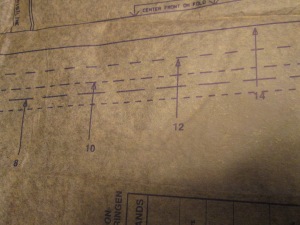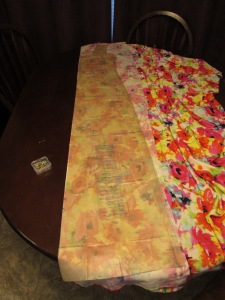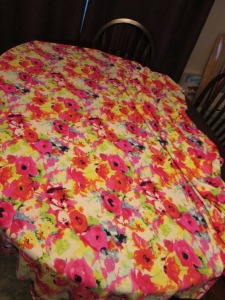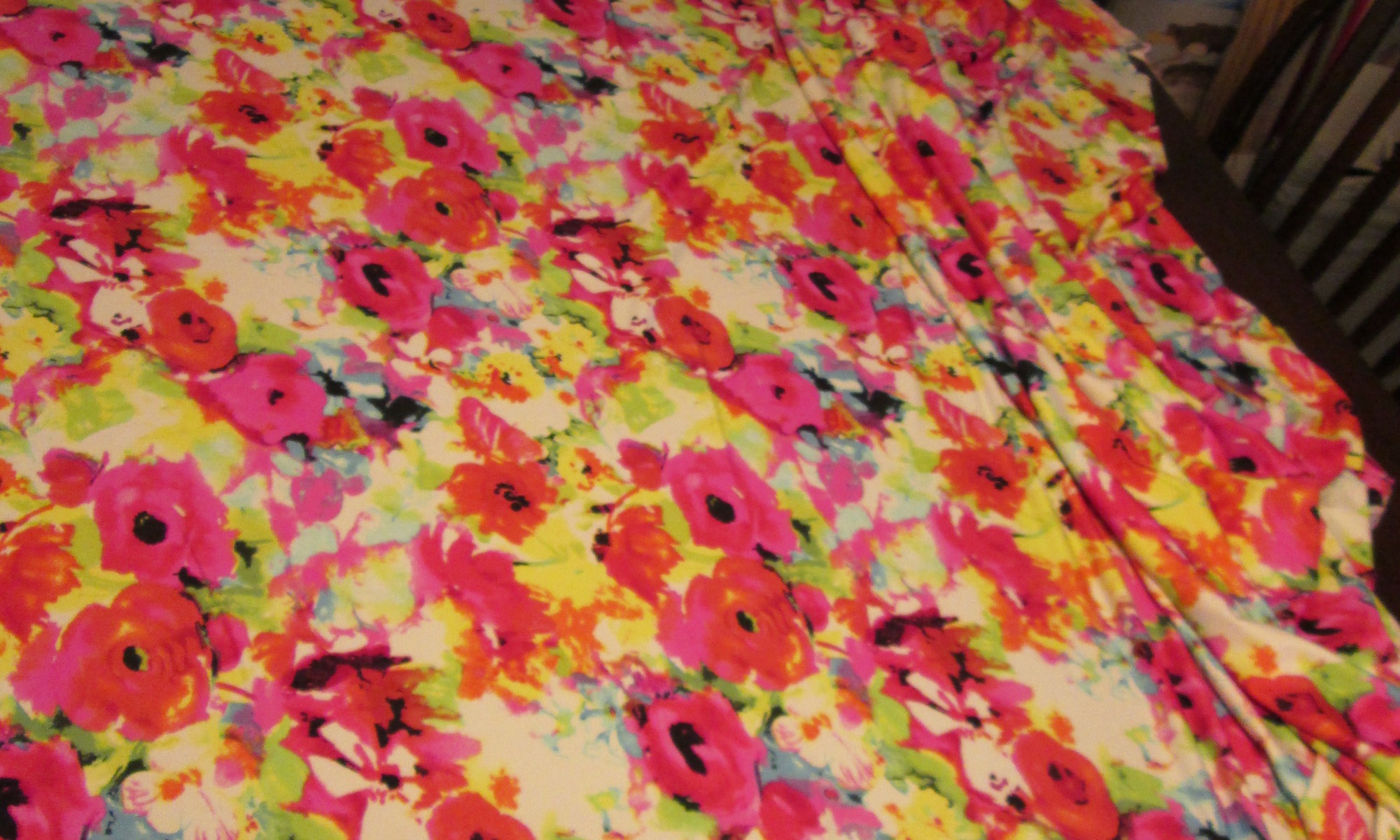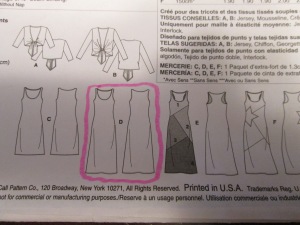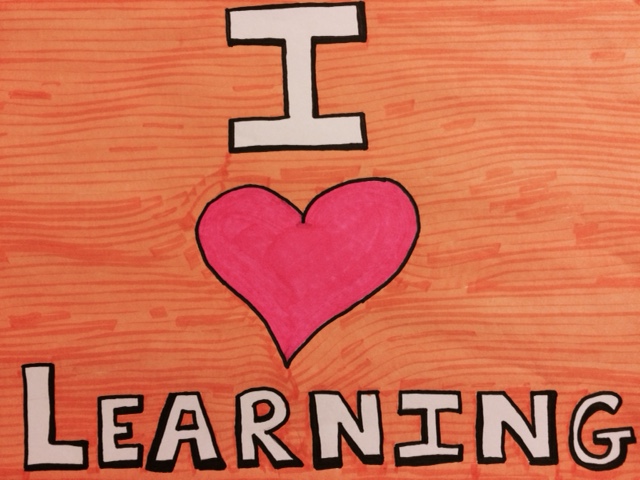The past few weeks have been incredibly busy as November is filled with midterms and assignments in preparation for the end of the semester. In this swarm of activity, I made sure to find time to continue to continue my learning for my learning project. On the other hand, I neglected my duty to post my progress and in doing so, this post will explain the last few weeks of my learning project as a whole.
As I am working towards sewing a dress for my learning project, I decided that I should make a smaller project before to give myself practice. I was on Pinterest one day, looking up ideas for beginner sewing projects and I found a few posts on skirts. Each post that I looked at ensured me that skirts are one of the easiest project for beginners working with a sewing machine. When I tried to decided on a particular style of skirt, I found a pattern to create a square circle skirt. Looking through the instructions and the information on this link, I noticed that the pattern for this skirt contained very few materials and seams. In my search for more information on this style of skirt, I found another instructional website that altered the pattern by making it a double layered square circle skirt.
I started my project by reviewing the instructional website and clarified what materials I needed and how I could break up my project to be able to complete it within my available time in my crazy busy schedule. Once I made a list of materials that I needed, I went out to Wal-Mart and purchases a package of material, along with enough elastic for the waistline and some pins. The picture below displays my collection of materials that I needed for this small project.
 Once I had all of my supplies I unrolled my material and laid it with the pattern facing down on my working surface (my kitchen table).
Once I had all of my supplies I unrolled my material and laid it with the pattern facing down on my working surface (my kitchen table).


I ran into a bit of a problem. I realized that I did not have a tape measure, so I had to improvise. I use my current belt to wrap around my waist and then I used the ruler (right) to measure how big my waist was. I then found a bowl that measured approximately the same circumference as my waist. From here I found the center of the material and placed the bowl upside down in the center. I used the ruler to double check that the bowl was in the middle. After this, I used a pencil to trace around the bowl on the material.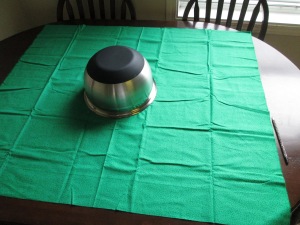
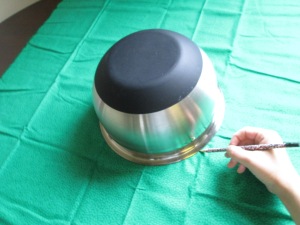
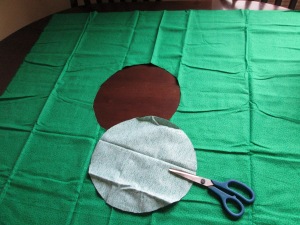
After this, I took my material and cut out the circle that I had drawn. Once this was completed, I set that piece of material aside and laid out my second piece of material. I followed the same steps with the second piece. After laying out the material, I placed the bowl in the middle and traced around it. Finally I cut out the traced circle. The pictures below demonstrate my steps.
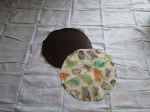
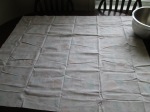
Once these steps were finished I took the first layer and the second layer and laid them on top of each other on the table. I laid the second layer on a 45 degree angle.  As the picture to the right shows, I made sure that the cut out circles in the middle lined up with one another. Once the edged were lined up, I used pins to hold the material together.
As the picture to the right shows, I made sure that the cut out circles in the middle lined up with one another. Once the edged were lined up, I used pins to hold the material together. 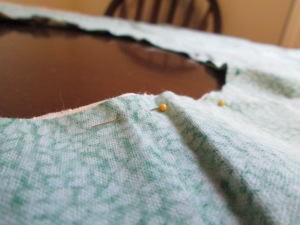 From here I grabbed my piece of elastic and cut it to fit around my waist plus half and inch on either side for overlap.
From here I grabbed my piece of elastic and cut it to fit around my waist plus half and inch on either side for overlap.  I then pinned the elastic ends together with approximately a half an inch overlap to create a circle and then sewed the elastic. Once I had my elastic circle I placed the elastic in the middle of the cutout and then used pins to attach the elastic to the material with a slight overlap. I founded a instructional site that helped me further understand how to attach the elastic to the material properly.
I then pinned the elastic ends together with approximately a half an inch overlap to create a circle and then sewed the elastic. Once I had my elastic circle I placed the elastic in the middle of the cutout and then used pins to attach the elastic to the material with a slight overlap. I founded a instructional site that helped me further understand how to attach the elastic to the material properly.
Through this process I learnt that the pins work better if they are placed on an angle so that the sewing machine does not catch on them when you are sewing. I used a straight stitch at first to 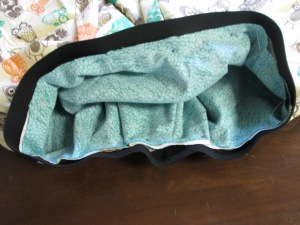 hold the elastic to the material and then I used a honeycomb stitch after. while I was writing this blog, I knew what the stitch looked like, however I did not know the name of it, but I found it one the Singer Website. I now had my basic skirt. I tried it on to make sure that it would fit.
hold the elastic to the material and then I used a honeycomb stitch after. while I was writing this blog, I knew what the stitch looked like, however I did not know the name of it, but I found it one the Singer Website. I now had my basic skirt. I tried it on to make sure that it would fit.
When I was done the body of my skirt, I wanted to make the edges look nice. 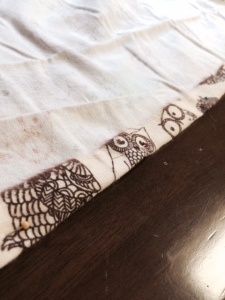 So I put my skirt on my table upside down and spread out one layer at a
So I put my skirt on my table upside down and spread out one layer at a 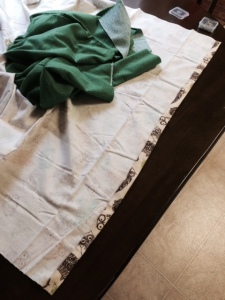 time to fold over, pin and sew the edges of the skirt. The following pictures show my edging and my final skirt. When this was done, I had create a fun, cute skirt that I made all on my own.
time to fold over, pin and sew the edges of the skirt. The following pictures show my edging and my final skirt. When this was done, I had create a fun, cute skirt that I made all on my own.
This was a great experience to create my own skirt from scratch. I think that it was a great idea to create a smaller project before starting my dress.I learnt many new things during this process that will benefit my process of creating a dress.

 Learning is fun!
Learning is fun!




